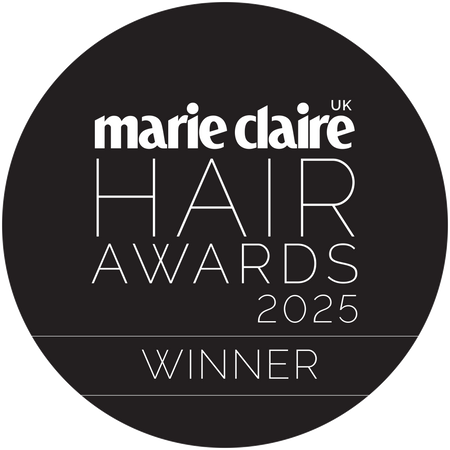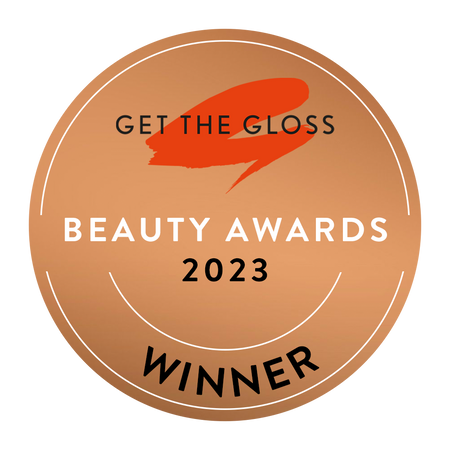What are the different types of damaged hair?
Damaged hair can be caused by many different things, from environmental factors like dry weather and low humidity, to the stress or strain we put our hair through our not-so-healthy hair habits. Let’s look into these in a little more detail:
Damaged hair from bleach

We’ve either all bleached our hair at one point in our lives or at least thought about it, but most of us know the risks and damage that come with it in the quest to lighten or change our natural hair colour. Whether you’re going for a whole head of bleach blonde or adding some subtle highlights, it’s going to cause some damage to your strands. Bleach strips the pigment from the shaft of your hair through the process of oxidation. During this process, the bleach raises the hair’s outer cuticle so the product can penetrate and lighten your hair. If you over-bleach your hair, the cuticle remains raised permanently, which causes you to lose moisture from your strands. This also makes your hair more vulnerable to other hazards such as heat-styling and damaging effects from the weather. Eek!
Damaged hair from heat
You can’t beat the feeling of a good blow dry or the silky smooth feeling you get from straightening your hair, but these good feelings come with some bad ones. You guessed it - damage. Using styling tools on your hair, such as blow dryers, straighteners and curling irons can seriously damage your hair. Especially if you don’t use heat protection spray or if your styling tool doesn’t have any temperature controls. With some tools reaching boiling temperatures, high heat can actually change the shape of your hair’s keratin structure. This leads to weaker hair that has lost its elasticity and that’s more prone to damage. Using hot tools can melt the keratin and strip the natural oils from your hair, evaporate the water that’s in your hair and crack the cuticles making them more vulnerable to further damage. SO not ideal.
Damaged hair from dye
 When your hair is feeling a bit dull and lifeless or some pesky greys are starting to creep up, it can be tempting to reach for some box dye or book yourself in at the salon, but just because it isn’t bleach, doesn’t mean it isn’t damaging. Similarly to bleach, when you dye your hair the chemicals in the dye lifts the cuticle so the colour can penetrate your hair shaft. And as we mentioned before, this leaves your hair to lose moisture, becoming more vulnerable. What about semi-permanent dyes? These are less damaging than bleach or permanent dyes, but as their results don’t have a long-lasting effect and you’re likely to use them more often - you’re still exposing your hair to ingredients that can be damaging. That’s not the goal!
When your hair is feeling a bit dull and lifeless or some pesky greys are starting to creep up, it can be tempting to reach for some box dye or book yourself in at the salon, but just because it isn’t bleach, doesn’t mean it isn’t damaging. Similarly to bleach, when you dye your hair the chemicals in the dye lifts the cuticle so the colour can penetrate your hair shaft. And as we mentioned before, this leaves your hair to lose moisture, becoming more vulnerable. What about semi-permanent dyes? These are less damaging than bleach or permanent dyes, but as their results don’t have a long-lasting effect and you’re likely to use them more often - you’re still exposing your hair to ingredients that can be damaging. That’s not the goal!
Damaged hair from lack of moisture

Heat styling and bleach may be the first things that come to mind when you think of damaged hair, but a lack of moisture in your hair is also super damaging. Not just about how it looks on the outside (think: a glossy, thick mane that you’d see on a shampoo advert), it’s also about how moisturised it is on the inside. Moisture prevents breakage and improves your hair’s elasticity and so a lack of moisture does the opposite, leaving sad hair behind. While our body naturally produces oils from the scalp to keep our hair hydrated, sometimes that’s not enough. People with curly, coily or thick hair need extra help in the moisture department, as the structure of the hair means it’s tricker for the natural oils to travel down the strands to keep them protected. That’s why curly and coily hair tends to be drier and more fragile.
How to tell if you have damaged hair
Chances are if you have damaged hair, you already know about it. Most signs of damaged hair are pretty easy to spot; split ends, dryness, breakage, frizz or hair loss. But there are some lesser known signals you should look out for too. If your hair has lost its shine and is dull, limp and lifeless, then it’s most likely damaged. If you have difficulty detangling it it means you should A. get one of our detangling brushes (wink, wink) and B. work out what is causing your hair harm. If you have curly or coily hair, you might notice your curls stop forming or your texture changes - these are also strong signs of damaged hair.
How to repair damaged hair fast
Damaged hair can sound scary - and it is if you do nothing about it - but fortunately for you, there are ways to remedy any serious damage and get your hair back to excellent health. However, there is no overnight success story here. While you can see results after a few treatments or masks, properly repairing your hair takes time, care and patience. Avoid quick fixes and focus on the healthy habits that you can keep for life.
Tangle Teezer’s top tips to repair damaged hair
Now this is the moment you’ve been waiting for; how to actually repair that damaged hair of yours. Here are our top tips and the healthy hair habits that you should make a permanent fixture in your hair routine:
Get regular trims
If you shy away from trims, stop right now (thank you very much). Getting regular trims means you’re getting rid of the split ends and damaged bits. Not only will your hair look healthier with those dry ends gone, it’ll also be healthier. When you leave split ends, the hair continues to split in two up the shaft of the hair, making it thinner and more fragile - and who wants that? Scissors aren’t scary, we promise!
Use hair masks
Remember when we were talking about how important moisture is for healthy hair? Well this is where hair masks come in. Damaged hair is thirsty and it’s up to you to leave it feeling quenched with a moisturising mask. Weave a hair mask into your hair care routine and you’ll never look back. Don’t know how to use a hair mask? Check out this handy guide where we tell you how to use one, as well as all the benefits that come with them.
Use hair sunscreen
By now we all know the importance of using SPF on your skin every day (yes, even when it’s cloudy), but what about your hair? As much as we love the sun for giving us that sweet, sweet vitamin D, it’s an unrequited love when it comes to our skin and hair. When you go out in the sun without protection on your hair, it can fade coloured hair, strip the hair of moisture and make your strands feel dull and dehydrated. The best way to prevent this from happening is to invest in a sunscreen that is made specifically for hair - don’t smother your hair in the thick, white stuff that you use on your body!
Limit exposure to chlorine
Whether you’re a keen swimmer or you only dip your toe in the chlorine-filled pool in the summer, it’s important to protect your hair from the chemical. Chlorine sucks the natural oils from your hair, leaving it dry, rough, and damaged - pretty harsh if you ask us! It can also strip the colour from your hair, weakening your strands and leaving you with split ends. While it’s tough to completely protect your hair from chlorine there are some things you can do before diving in; wear a swimming cap, wet your hair before getting in the pool, use a leave-in conditioner before getting into the pool or use hair oil.
Use hair oils
Speaking of hair oils… hair oils are the perfect product to introduce to your routine when it comes to repairing your hair. Moisturising, softening and protecting, hair oils are perfect for when your own natural oils aren’t doing their job. Not only do hair oils improve the elasticity of your hair, they also hydrate, prevent frizz and can even be used as a heat protectant. Get ready for your hair to drink it all up!
Wear loose hair styles
 Slick ponies, tight braids, a high bun that could rival a facelift - we love them all, but when it comes to caring for your hair, they’re not the best. Tight styles can cause your hair to break away from the roots, making it weak and even causing follicle damage. We’re not saying completely ditch your favourite up-dos, but balance them out with looser styles such as a low ponytail, having your braids looser at the scalp or a loose bun.
Slick ponies, tight braids, a high bun that could rival a facelift - we love them all, but when it comes to caring for your hair, they’re not the best. Tight styles can cause your hair to break away from the roots, making it weak and even causing follicle damage. We’re not saying completely ditch your favourite up-dos, but balance them out with looser styles such as a low ponytail, having your braids looser at the scalp or a loose bun.
Less heat styling
Earlier, we touched on just how damaging heat styling is for your hair - we know, we wish it wasn’t either! But there are ways to style your hair without heat and still give your hair a sleek finish. There’s a plethora of different heatless styling methods, we suggest trying a few and working out which work best for you and your hair. If you must use heat, try and take it down to once a week if you can.
Use leave-in conditioners
We’ve said it 50 times, we’ll say it again - moisture really is the key when it comes to repairing and maintaining healthy hair. In the quest for more moisture, leave-in conditioner is your best friend, especially if you have very dry hair or thick, curly and coily hair. Apply it to towel-dried hair, after shampooing and before styling. If you have particularly dry or damaged hair, you can still use your in-shower conditioner and double up with a leave-in.
Pay attention to your scalp
 A healthy scalp equals healthy hair, so it’s time to start giving your scalp a bit of love. Introducing scalp scrubs and scalp massagers to your hair care routine really are game-changers. A scalp scrub will buff away any dead skin cells and build up, leaving your hair follicles to breath, while a scalp massage will stimulate blood flow to your scalp, meaning faster hair growth. You can’t go wrong with our Scalp Exfoliator & Massager. And as a bonus, they both feel good. Like, really good!
A healthy scalp equals healthy hair, so it’s time to start giving your scalp a bit of love. Introducing scalp scrubs and scalp massagers to your hair care routine really are game-changers. A scalp scrub will buff away any dead skin cells and build up, leaving your hair follicles to breath, while a scalp massage will stimulate blood flow to your scalp, meaning faster hair growth. You can’t go wrong with our Scalp Exfoliator & Massager. And as a bonus, they both feel good. Like, really good!
Dye your hair less often
Reaching for the dye is tempting, especially when it (temporarily) leaves you with healthier feeling hair. But remember it is just temporary! While it looks shiny and feels glossy at first, it actually is getting more damaged behind the scenes. Try going longer between dying it, or stopping it all together but if you must dye your hair, see our next point…
Use professionals for hair colouring
 As we mentioned above, box dyes are very harsh on your hair. If you want to change your hair colour, cover greys or touch up your roots, going to the salon is a must. Salon hair dye has less ammonia than dyes you buy at the shops, which means less damage. Salons can also offer treatments to go along with your colour job to make sure damage is minimal and moisture is retained. Not only will a salon colour be better for your hair health, the colour itself will be more fabulous.
As we mentioned above, box dyes are very harsh on your hair. If you want to change your hair colour, cover greys or touch up your roots, going to the salon is a must. Salon hair dye has less ammonia than dyes you buy at the shops, which means less damage. Salons can also offer treatments to go along with your colour job to make sure damage is minimal and moisture is retained. Not only will a salon colour be better for your hair health, the colour itself will be more fabulous.
Handle wet hair with care
When your hair is wet, it’s way more fragile, so being as gentle as possible is important. To avoid any snapping or breakage, we recommend detangling with our Ultimate Detangler, starting from the ends and gently working your way up. Use a conditioner or detangling spray to make sure there’s extra slip!

And there we have it! While we recommend seeking medical advice if your hair is extremely damaged, all these tips are natural and remedied to reverse the effects of damaged hair. The more tips you incorporate into your hair routine, the better the results. Your New Year hair resolutions start here!











